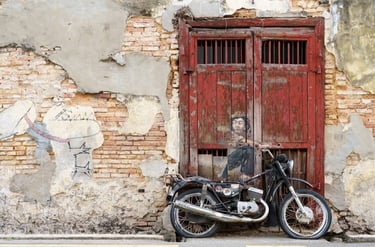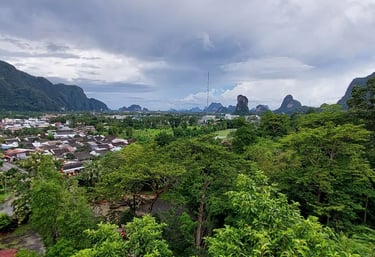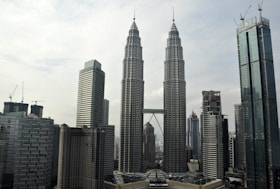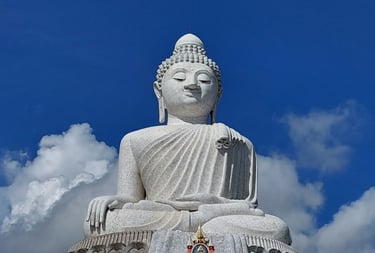
Ultimate Guide To Diving Sipadan Island Borneo
Sipadan Island offers World class diving and is home to the best diving in Borneo. Famous for massive schools of fish, spiraling Barracudas, enormous Green Turtles and schooling reef Sharks, diving in the current here is spectacular. Read on to discover diving Sipadan Island together with Mabul Island and Kapalai Island.
MALAYSIA
About Sipadan
Sipadan is the top of an extinct volcano rising 600m from the seabed in the Celebes Sea fringed with a natural hard coral reef. It lies almost at the centre of the Coral Triangle known for its massive marine biodiversity, assisted by the protection it is now afforded by the Malaysian Government.
Just a few hundred metres across, it is also an ancient turtle nesting ground supporting between two and three hundred nesting turtles at any given time. Diving Sipadan you will almost certainly encounter turtles resting, grazing, and swimming, as well as a host of golden batfish, a tornado of barracuda, a valley of white tipped reefs sharks, and a herd of bump head parrotfish, very much akin to a herd of bison, which seem to be forever stampeding round and round the island.
The main attraction for us in Sabah was diving at Sipadan Island!
It’s one of the top ten dive locations in the World, if you’re an avid diver you should already have Sipdan on your bucket list!
Sipadan is just off the northeast coast of Sabah in Malaysian Borneo, an island made famous by the legendary Jacques Cousteau in his documentary Ghosts of the Sea Turtle in 1989; “I have seen other places like Sipadan, 45 years ago, but now no more. Now we have found an untouched piece of art”.
Add to this the coral reefs and a plethora of larger reef fish like unicorns, surgeons and six bar angels and you’ll know why even four dives a day is simply not enough.
In the late 1980s, dive tourism almost ruined Sipadan. There was once a dive resort on the island, as well as hordes of divers from surrounding resorts visiting it daily.
The resort was closed in 2004 and the number of divers is now limited by permit to 120 per day. If you are on a 2-3 day diving package you can expect to have only 1-2 dives at Sipadan, the rest will be around Mabul, Kapalai and other dive sites.
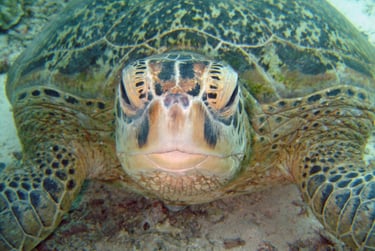

Sipadan is open for diving year round.
The best visibility - up to 50m is during the dry months of March to July.
Sipadan is generally warm and sunny all throughout the year, although there is a short wet season which presents cooler ocean breezes and scattered rain showers.
There are peak seasons which are generally July – August, Chinese New Year, Christmas and New Year holidays.
When Is The Best Time To Dive At Sipadan?

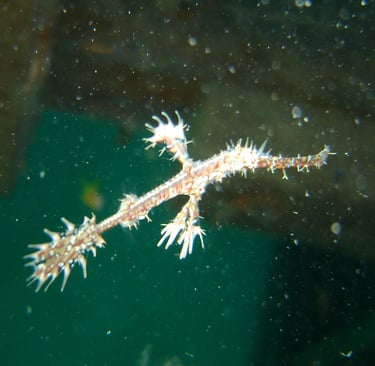
Getting to Sipadan
The gateway to Sipadan, Mabul and Kapalai Islands is Semporna Pier, all divers will pass through here on their way.
Semporna, a couple of hours south of Lahad Datu is the port town destination that attracts divers from all over the world to access the islands of Sipidan and Mabul.
We booked our diving package with Borneo Divers and opted for their Mabul Island Dive Resort. We flew from Kota Kinabalu to Tawau landing at 07.25. Borneo Divers arranged our seamless transfer from the airport all the way to Mabul Island.
If you arrive later in the day you may need to spend one night in Semporna before transferring out to your chosen accommodation. Or, some divers prefer to keep the cost down by staying in Semporna and making daily trips to the dive site around Sipadan, Mabul and Kapalai.
Where To Stay To Dive Sipadan
Mabul and Kapalai are great islands to base yourself for easy access to Sipadan and great diving on their own fringing reefs. On Mabul you will find a range of resorts to suit most budgets, including Borneo Divers, Scuba Junkie, Mabul Water Bungalows, Sipadan Mabul Resort and on Kapalai, Sipadan Kapalai Resort.
There is also the Seaventures Dive Rig – a repurposed oil rig that stands in about 24m of water about 1km off Mabul. It is probably the only dive resort in the world where you take a lift down to the House Reef.
You can stay on the mainland in Semporna, the commute to Sipadan is longer, but the accommodation options are much wider in Semporna, especially at the budget end.
We stayed at Borneo Divers Mabul Resort as it is one of the most established dive resorts in Sipadan and is highly recommended. We opted for a four day three night package.

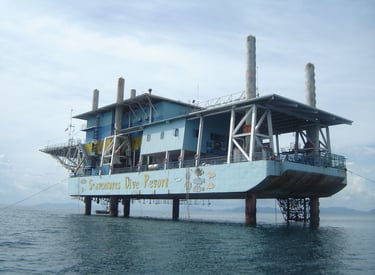

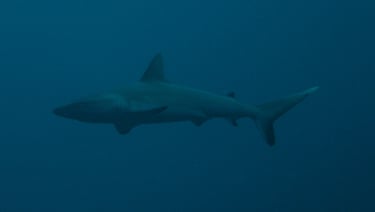
Borneo Divers - Mabul Resort
Popular with divers, families and non-divers, as well as film crews and marine photographers, the resort sits right on a powdery white sand beach.
There’s plenty to do while you are not diving or planning your next dive. If you are waiting to get under the water you can pass the time over the water snorkelling or kayaking. The swimming pool is wonderful.
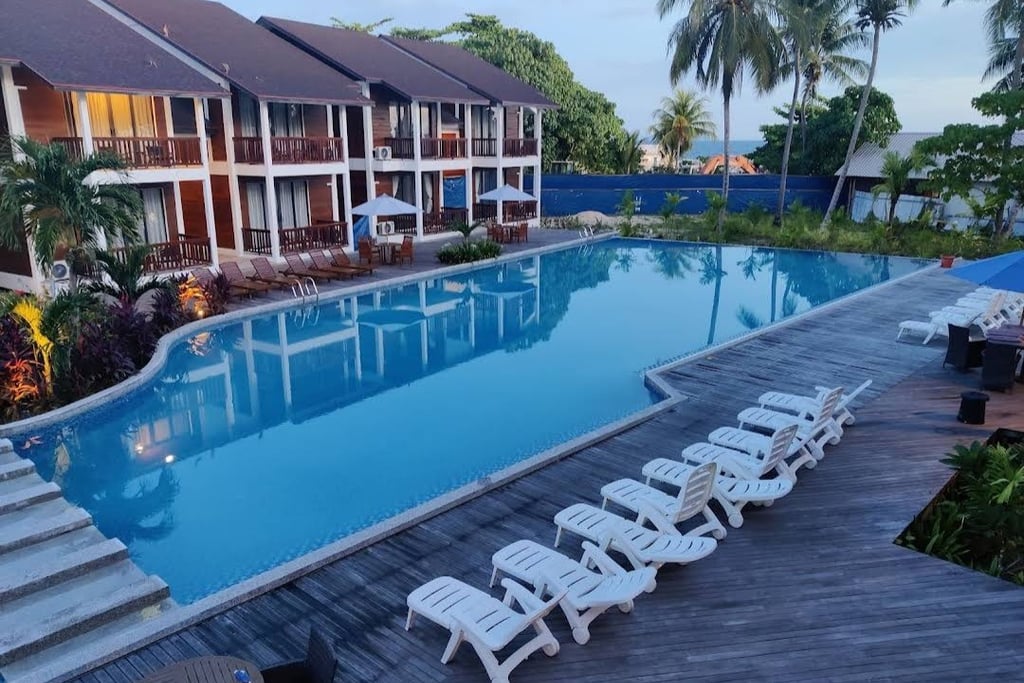

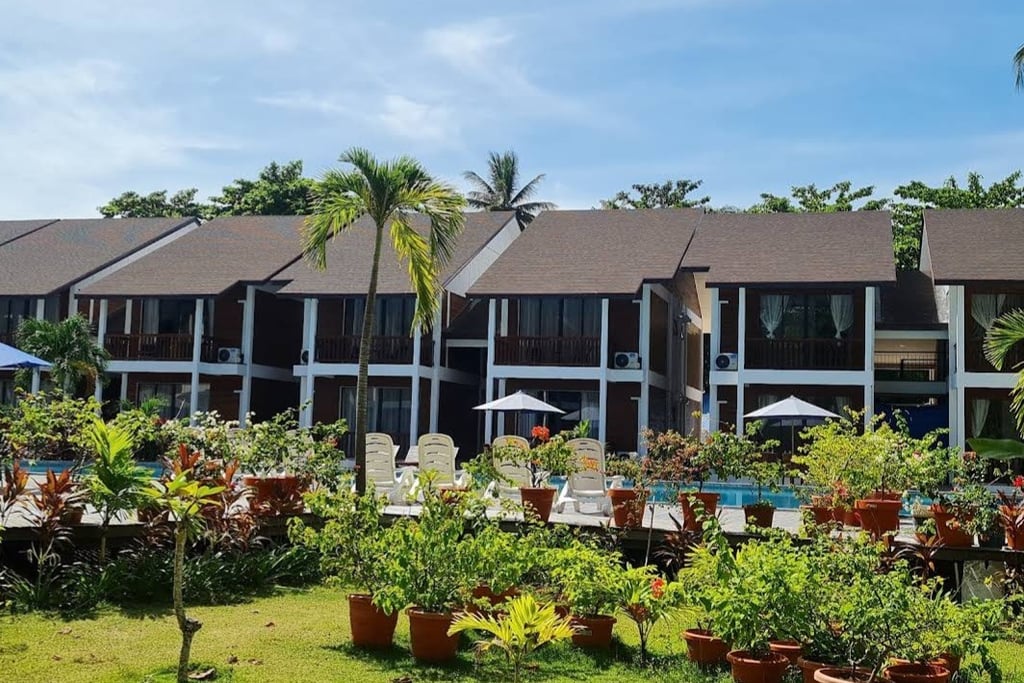

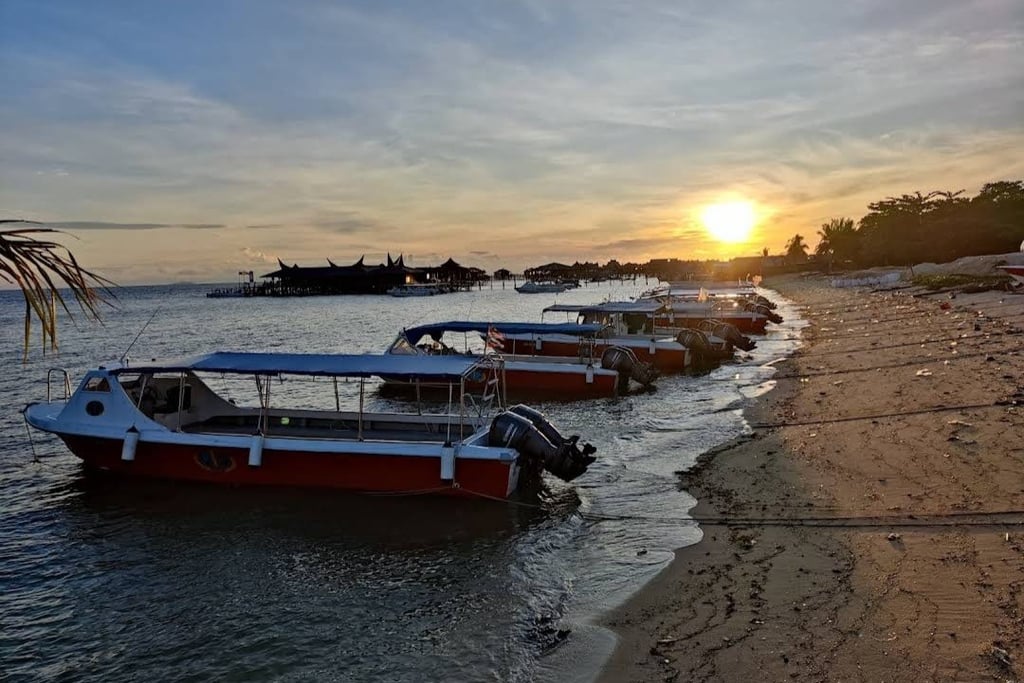

Our package included a luxury villa room and full-board meals (3 meals daily, snacks and free flow coffee/tea and cordial juice)
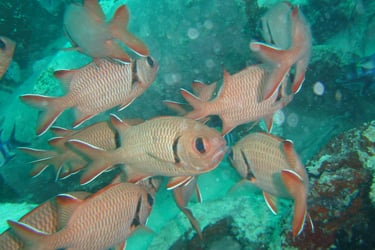

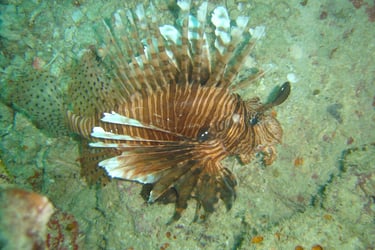

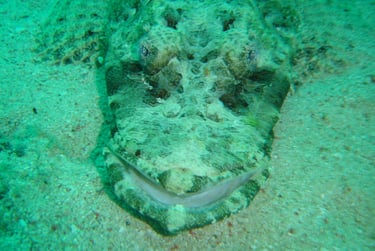



There also table tennis, beach volley ball, kids trampolines, pool table, foosball table and board games.
Borneo Divers also offer the full range of PADI Certification courses.
Our dive package included 3 boat dives a day (around Mabul and Kapalai) and unlimited jetty house reef dives without guide. We dived at Sipadan one day which included two dives.
We hired complete sets of equipment at an additional fee as we were only travelling light with only our masks, fins, snorkels and dive computers.


We highly recommend Borneo Divers Mabul Resort. The accommodation is excellent and the dive operation is very professionally run. The dive guides are fun and friendly and fantastic at spotting the small critters!
Click here for more photographs and visitor reviews. Your next dive adventure awaits!
Diving At Sipadan
Home to over 3,000 bio-diverse species of fish and coral, the incredible underwater paradise here is truly a once-in-a-lifetime experience for both snorkellers and scuba divers alike, with about 100 dive spots, including 14 notable sites that attract divers the world over.
It is one of the few places on earth where you could marvel at coral formations, and enjoy sightings of manta rays, turtles, schools of angel and trigger fish, barracudas, moray eels and gobies, as well as whalesharks, hammerhead sharks and white-tip sharks, all in just a single dive!
In our surface interval, Sipadan is relaxed and quiet, we took a away from the ‘pit stop area’ where all the dive shops serve lunch.
The western side of Sipadan is the deepest part and plunges to 2000m in some parts. On these steep wall dives divers can spot hammerhead sharks and grey reef sharks lazily swimming at depths of more than 60m.
The dive sites on the west of Sipadan are best dived in the afternoon when the sun hits this section of the island. They are also best done as drift dives, allowing divers to follow the currents that will eventually take them towards South Point.
The steep wall dives are home to colourful corals, sponges and in the blue water divers might be able to encounter large pelagics.
The Hanging Gardens, Staghorn Crest, West Ridge, Lobster Lair
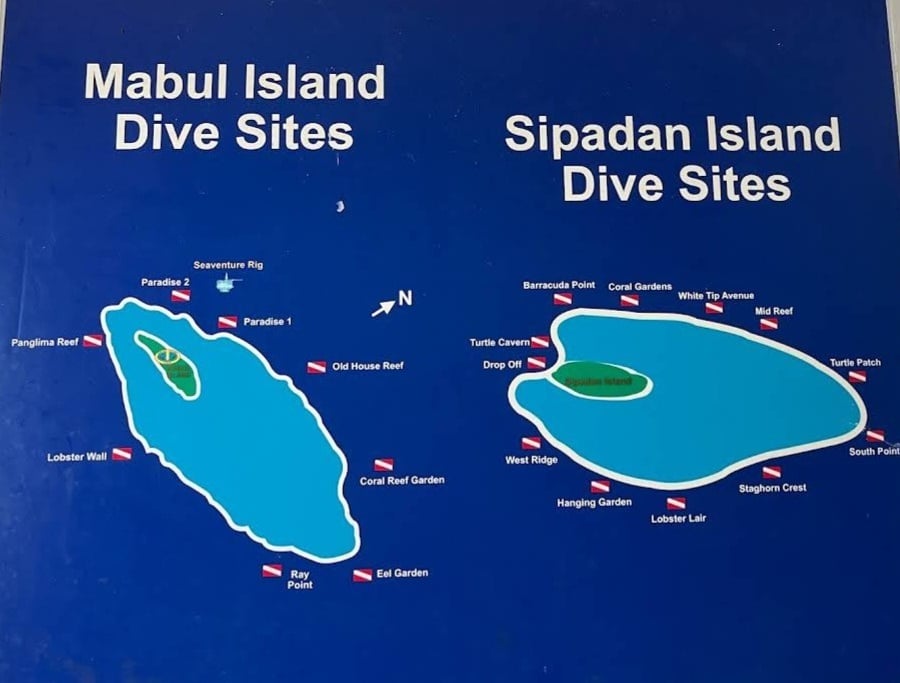

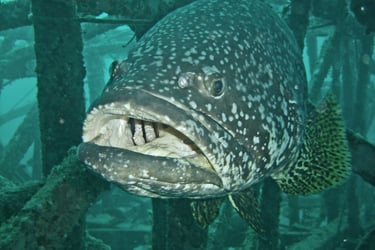

The eastern Sipadan dive sites are best enjoyed in the morning when the sun shines on this side of the island. The colours of the magnificent reefs and walls in the region are beautifully lit by the morning sun and there’s plenty to be seen. This side of Sipadan boasts sightings of giant tuna, devil rays, pickhandle barracuda, manta rays and giant trevallies to name just a few.
If conditions permit, there’s an excellent drift dive beginning at Turtle Patch and ending at Barracuda Point.
Mid-Reef, White-Tip Avenue, Turtle Patch, Coral Gardens
Of course, you cannot discuss Sipadan dives sites without mentioning its most talked about site – Turtle Cavern, at a depth of 20m a short swim to the right of the jetty and about 20m deep.
As well as encountering hundreds of trevally and fusilier fish, you could lose count of the number of graceful green turtles gliding around the entrance, as you head into this huge underwater cave system which is about 65m long and full of interesting stalactites and stalagmites. However you will also see quite a few skeletons inside, as a spooky legend says that this is the spot where turtles come to die.
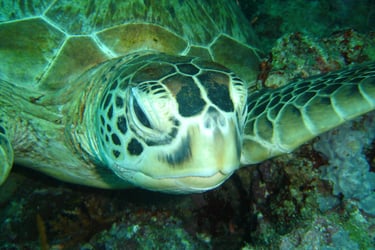

Mabul Island is also open year-round and offers some of the best macro diving around.
Crazy creatures and tiny, interesting-looking critters are what the diving is all about at Mabul Island. Divers enjoy regular sightings of flashing flamboyant cuttlefish, pygmy seahorses, harlequin shrimp, well-hidden frogfish, blue-ringed octopus, scorpion leaf fish and more.
Don’t miss the sunset boat dive to see the magnificent Mandarin Fish and their mating display. Every day at around 5pm these sweet, vibrant fish meet at Paradise 1 and perform an incredible mating ‘dance’ similar to a twisting underwater tango.
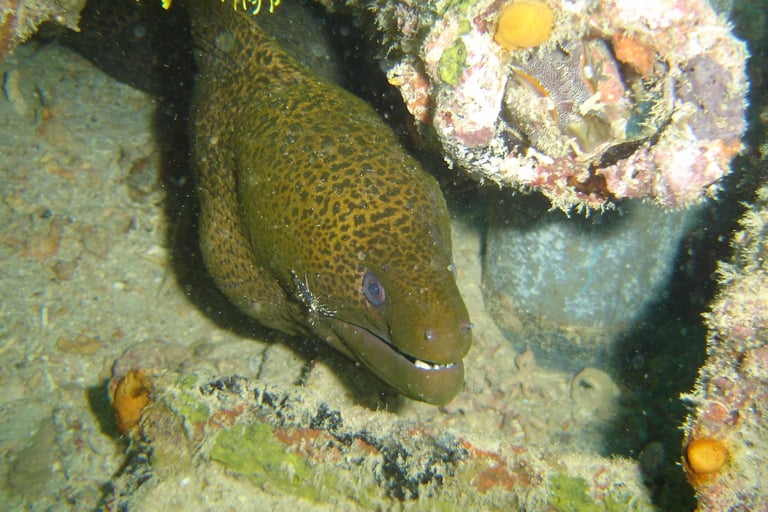

Kapalai Island is also open year round.
Some of the world’s weirdest and most wonderful critters can be found around Kapalai, which is why it’s known as one of the world’s best muck diving destinations. Kapalai's Ligitan Reef forms a golden triangle with Sipadan and Mabul islands.
The visibility here can be better than nearby Mabul Island.
Depths at Kapalai range from 5 to 18m, you’ll find a sandy sea floor with some coral heads and a few sloping reefs. Visibility is between 5 and 15m, perfect for muck diving.
The critters here can be notoriously difficult to spot, even when a dive guide or buddy is pointing right at them. These truly incredible creatures often remain hidden in the nooks and crannies of the reefs, so be sure to keep alert and take your time.
We recommend familiarizing yourself with the creatures you expect to see so you know what to look out for; nudibranches, ghost pipefish, frog fish, scorpion leaf fish, crocodile fish, crab eye gobies and many more.
The blue ringed octopus and the wonder octopus, both masters of disguise, may be hidden in the nooks and crannies of Kapalai, and a few of the interesting-looking cuttlefish varieties such as the flamboyant, Papuan and reaper cuttlefish have been known to make an appearance too.
A few artificial reefs have been specifically created to encourage coral growth and conserve the flourishing eco-system. Large metal frames, sunken boats and special structures all lie beneath the surface at Kapalai.
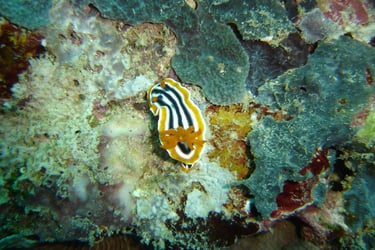

At the end of our package we were transported back to Semporna Pier. We then chose to spend the night in Tawau and enjoyed some delicious local food while off gassing.
The next day we took a 40 minute flight from Tawau to Sandakan with Malaysian Airlines to continue our Borneo adventure.
You could add a 3D2N at Danum Valley Conservation Area here. Danum Valley is one of the world’s most complex eco-systems with a towering 70m high canopy, home to some of the oldest dipterocarp rainforest in the world. Danum Valley is one of the best places in Borneo to visit if you’re a serious naturalist.
Discover Our Other Guides
Phang Nga On A Backpacker Budget
Note: This post contains affiliate links. When you make a purchase using one of these affiliate links, we get paid a small commission at no extra cost to you.
SUBSCRIBE
Subscribe to our newsletter to always be the first to hear about recent Blogs and adventures.



